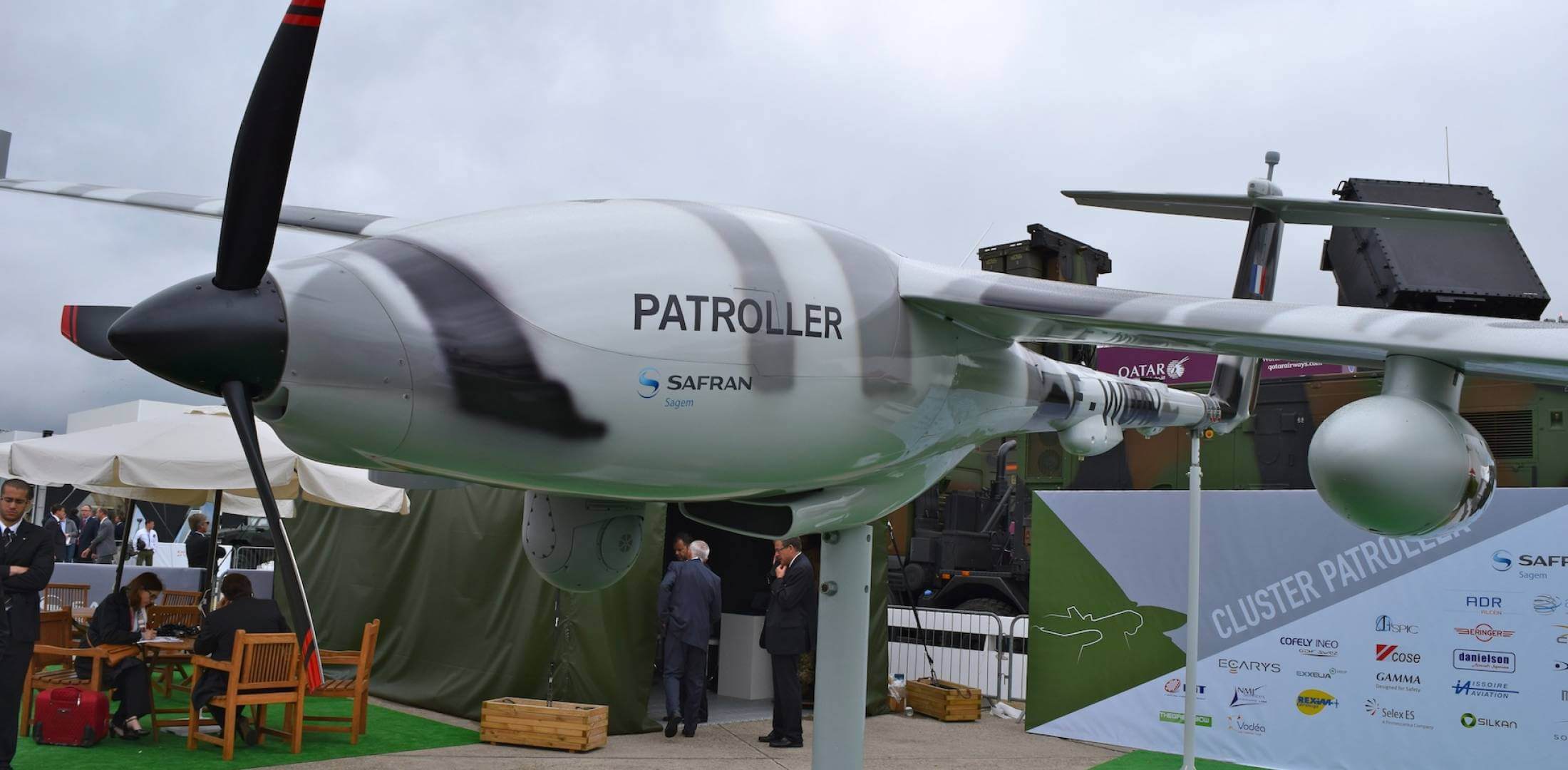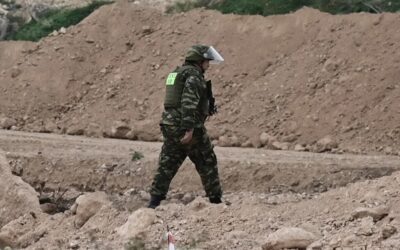The British Royal Navy has named the newly-built Astute-class nuclear-powered submarine HMS Agamemnon. Doing so, the…

The Hellenic Army has tasked the NATO Support and Procurement Agency (NSPA) with the upgrade of their Sperwer tactical Unmanned Aerial System (UAS) through a contract with Safran Electronics & Defense.
Further, Greece is acquiring Patroller UAVs from the French company in the context of the upgrade of the Sperwer systems.

We will support the 🇬🇷 Greek Army with the upgrade of its tactical #drone force through a contract awarded to @SafranElecDef at the @parisairshow.
👉 https://t.co/LbhiXSQ3PF#WeAreNATO #StrongerTogether#ParisAirShow #ParisAirShow2023 pic.twitter.com/u9T8ZVY0t5
— NATO Support and Procurement Agency (NSPA) (@NSPA_NATO) June 20, 2023
According to a relevant announcement, the Patroller features a number of innovative technologies, as the system upgrade includes multiple sensors for intelligence missions on behalf of armies and homeland security forces.
Indicatively, the UAV in question is a Medium Altitude Long Endurance-type UAV (MALE) capable of conducting several different missions, such as border and coastal surveillance, law enforcement, artillery guidance, close air support, surveillance of major events as well as sensitive infrastructure, civil protection, and environmental protection.
Its main variants include:
- Patroller R: variant used for ground surveillance,
- Patroller M: variant used for maritime surveillance,
- Patroller S: variant used for homeland security.
Patroller UAV’s technical characteristics:
- Payload: multi-sensor/multi-mission equipment that includes wide-field-of-view sensors in pods under the wings and high-resolution optronic sensor mounted in the fuselage
- Operators: 2-3
- Operational altitude: 6,000 m
- Weight: 660 kg
- Operational speed:130-200 km/h
- Endurance: 20 hours
- Length: 8.52 m
- Height: 2.45 m
- Wingspan: 18 m
- Engine: 86 kW of output power
According to Safran, the Patroller can potentially carry Lockheed Martin AGM-114 Hellfire air-to-surface missiles or laser-guided rockets, allowing it to perform combat missions. In fact, the French DGA awarded Safran Electronics & Defense a risk-reduction contract in late 2019 to integrate Thales Acüleüs 68 mm induction rockets into its Patroller UAV.

Also, the Patroller can be operated either manually from the Ground Control Station or in autonomous mode. It is fitted with an automatic take-off and landing system (ATOLS) to assist in a safe landing in case of communication failure with the control station. This multi-sensor drone has a weak radar, heat, and sonic signature thanks to its electric, nearly silent engine.
The Ground Control System comprises two to three station operators, a ground data terminal, a remote video terminal, and a full mission training simulator. The remote video terminal (RVT) displays high-resolution images and geo-referenced videos and is linked to a directional antenna for receiving signals from the vehicle. It features a display terminal, portable receiver, and vehicle adaptation kit.
Communication between the vehicle and control station is enabled through Ku-band line of sight (LOS) datalink within a range of up to 200 km.
Also read: Orbiter 3 UAV | The “eyes” for the Greek Spike NLOS – VIDEO
In February 2023, the Patroller became the first tactical drone system to be officially certified to NATO airworthiness standard STANAG 4671, applicable to fixed-wing drones weighing more than 150 kilograms. This certification is a vital prerequisite for protection and homeland security missions.
Through this contract, NSPA will enable the Hellenic Army to perform a wider variety of missions, from support for land forces to maritime and border surveillance, while the upgrade confirms NSPA’s efficient, effective, and responsive answer to NATO’s requirements and the Agency’s key role in linking these with industry.
The deployment of systems based on new technologies from Safran Electronics & Defense is part of a real-time operating loop that links sensors to shooters, all under the control of digital command and control systems.
Also read: Aerostar | The first tactical UAV of the National Guard – VIDEO & Photos
READ MORE
NSPA | Awards first C-sUAS multinational contract in NATO’s history
The NATO Support and Procurement Agency (NSPA) has approved the first Counter-small UAS (C-sUAS) procurement framework agreement…
US Army | Receives new M10 Booker armored fighting vehicle
The US Army received the first M10 Booker light armored fighting vehicle during a formal ceremony on April 18, 2024, at the Aberdeen…
A reluctant alliance? A different approach to French – Serbian defence relations
It has only been a few months since Croatia started receiving the first of the Rafale fighter jets it ordered from France.
Elliniko | 314 bombs buried at former airport
Over 300 bombs from the Second World War have been found at the old airport of Athens in Elliniko. The news about the said…
Agamemnon | The new Astute-class HMS nuclear submarine of the Royal Navy
The British Royal Navy has named the newly-built Astute-class nuclear-powered submarine HMS Agamemnon. Doing so, the…
NSPA | Awards first C-sUAS multinational contract in NATO’s history
The NATO Support and Procurement Agency (NSPA) has approved the first Counter-small UAS (C-sUAS) procurement framework agreement…
USA | Signs bill on military aid to Ukraine
US President Joe Biden has signed a bill providing Ukraine with billions of dollars in new aid for its war with Russia, marking a rare…
Armenian Genocide Remembrance Day
On this day, 109 years ago, the genocide of the Armenian people by the Ottoman Empire began, with April 24 being the day of…




















